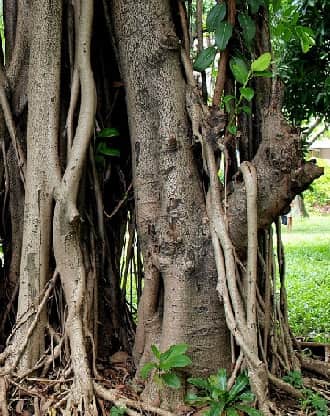One example of this adaptation is the spider monkeys genus ateles that have chosen to live at the tree canopies to avoid great competition in the under story.
Parã rubber tree tropical rainforest adaptations.
The leaves of the rubber tree are glossy oval shaped and dark green.
The leaves of the rubber tree are glossy oval shaped and dark green.
This is important because the bark helps make the latex.
They can grow to be 14 inches 4.
The places the rubber tree grows in is brazil venezuela ecuador colombia peru and bolivia.
As such plants growing here have special adaptations that allow them to grow and thrive in the tropical rainforest.
Tapping rubber is a highly skilled operation.
The rubber tree has beautiful smooth dark shiny leaves and a light shaded bark.
These trees love to be in full bright lights but will adapt if necessary to duller lighting.
During the day rubber trees prefer temperatures from 21 29 degrees celsius 70 85 degrees fahrenheit and at night they like temperatures from 18 23 degrees celsius 65.
These trees are generally found in low altitude moist forests wetlands riparian zones forest gaps and disturbed areas.
The vessels need to be tapped without damaging them.
Hevea brasiliensis is a species of rubberwood that is native to rainforests in the amazon region of south america including brazil venezuela ecuador colombia peru and bolivia.
It is a quick growing tree often the first to establish itself when a gap in the canopy is.
Today some rubber is sourced from designated areas of rainforest rather than plantations.
It is a rapidly growing tree as are most trees in the tropical rainforest it can sprout 24 inches 60 cm or more each season if it is in the proper environment.
Hence to make use of this great advantage some animals tend to climb up the canopies and live there.
These specializations have been mentioned below.
Reproduction happens when the fruit of the tree ripen and burst open leaving seeds scatteredin a 100 foot 3.
The rubber tree has a silvery type of bark and a rough top layer of bark.
With skill a single rubber tree can be tapped for 20 to 25 years.
They can grow to be 14 inches 35 cm long and up to 6 inches 15 24 cm wide.
Hevea brasiliensis the pará rubber tree sharinga tree seringueira or most commonly the rubber tree or rubber plant is a flowering plant belonging to the spurge family euphorbiaceae it is the most economically important member of the genus hevea because the milky latex extracted from the tree is the primary source of natural rubber.
The tropical rainforest is a home to numerous towering trees.
The tree can grow to over 100 feet tall 2.
Thanks for reading about the rubber tree.
An adaptation of a rubber tree is that it sheds its bark so as to absorb its nutrients when the bark decomposes in the soil around it.
Tropical rainforest plants with a shallow rooted tree are often equipped with buttress roots.
Rubber tree rubber tree where do you live.









